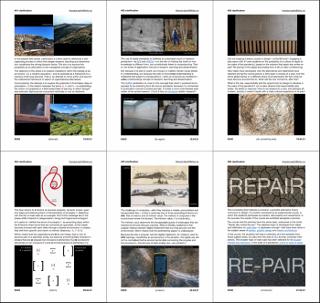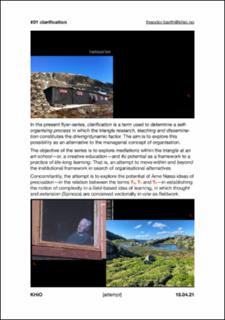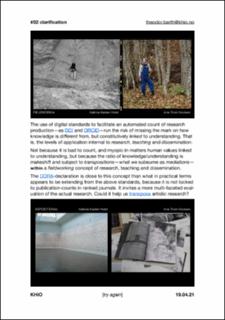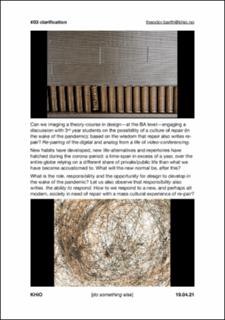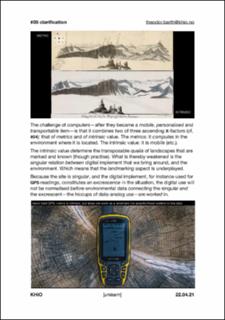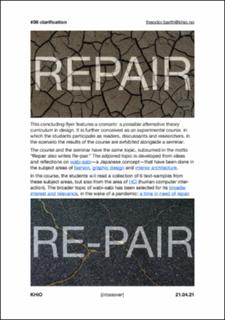| dc.description.abstract | The flyer-series [1HEX] explores the potential of activism to yield clarification, expanding clarification from the context of language to that of action. It queries whether teaching, researching and disseminating—if different modes of a unified activity field, rather than administered separately—can turn clarification into an organising dynamic, distinct from what we regularly understand as management.
The framework used to inquiry on this possibility is Arne Næss’ ecosophy T (T deriving from the name of a mountain resort where he built his cabin, Tvergastein). Clarification is here seen here to be self-organising in two ways: 1) steps to an ecology with its own intrinsic logic; 2) organising according to a self rather than identity, of belonging and connection.
The activism inquired into here, queries criticality under immersive conditions: what does it mean to articulate a critique—whereby clarification triggers something in/with the environment, beyond the clarify of mind. What is it to be part of something (situated and positioned) and make a difference, by bringing clarity to the situation and our own position? Does it prepare the grounds for activism in a more political sense?
In the flyer-set a comparison is ventured between the Zen of the Japanese wabi-sabi, and the terms of intimacy that come from accepting the ephemeral. The comparison between ecosophy T and wabi-sabi is conceptually expressed in the motto:
REPAIR also writes RE-PAIR.
A scenario for a possible alternative theory curriculum is explored on this basis. It is based on the query of what a landmark might be if we add time to space, and a hatching ground for learning outcomes after the pandemic, in the design field. | en_US |
